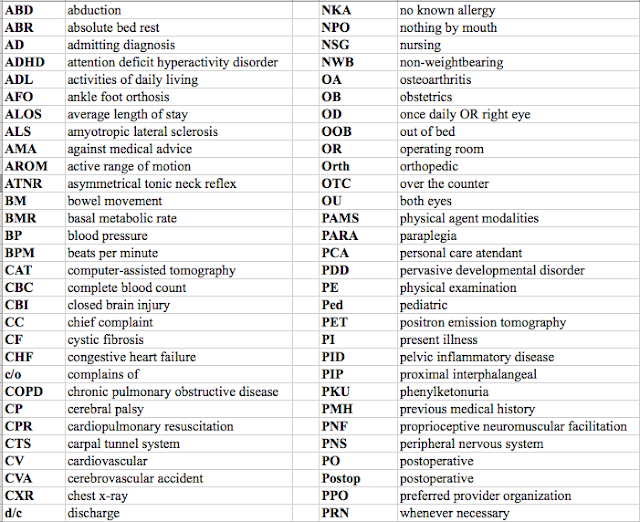Or as I'd like to call it, "OT Jargon". The first time many OT's open their first client chart, they become cross-eyed. I've come across at least 3 different ways to abbreviate the word "independent" and have written progress notes and discharge summaries ad nauseum. There are all sorts of abbreviations and symbols never seen before. It takes a lot of time to get used to but at the end you too can became familiar with "c/o, CBR, CXR, EOM, LOS..." and many more commonly used acronyms. Some time ago, I figured I should start making a list of all the symbols, abbreviations, and acronyms that I have come across and others that I might see in the future. Over the course of a few months and with the help of the Quick Reference Dictionary for Occupational Therapists by Karen Jacobs, EdD, OTR/L, CDE, FAOTA, I have compiled a list of useful terminology that might be beneficial to OT students, OTAs, OTRs, and even PTs.
